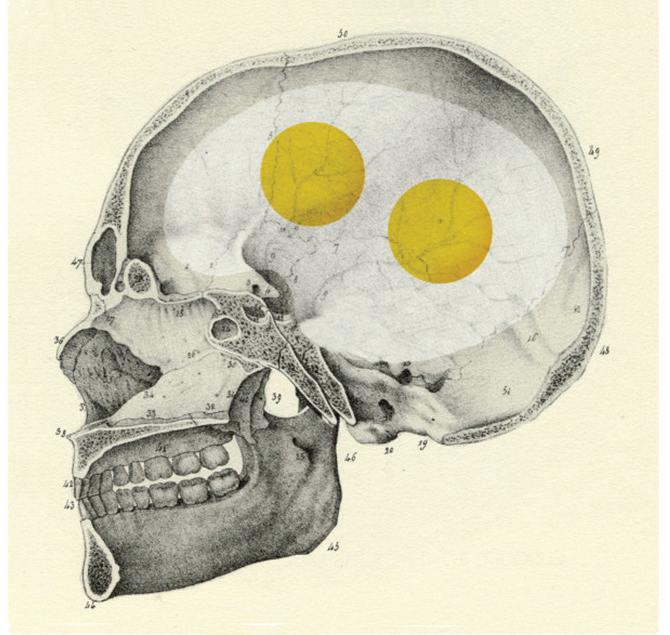
3 minute read
WILL THIS ROAD EVER END?
As a young boy, our family’s “vacation” was going to visit my grandparents in Salem, SC.
Correct. Salem. No stop lights and the road didn’t even widen out through town! Four of us siblings in the back seat, one usually laying behind the seat in the rear window shelf of our ’53 Pontiac with no seat belts. All of us close enough to our dad’s hand, which would smack us if we misbehaved. We didn’t know what air conditioning was. An open window blowing on our sweaty foreheads seemed good enough. Grandpa had recently installed electricity, so the old farmhouse he built with lumber from his 81acre working farm had one light bulb in each room. A pot-bellied stove heated the place, and there was a well to draw water from. Grandma cooked on an enamel wood stove. The country church we attended had no running water and a pair of outhouses close by.
On the way we kids constantly whined, “Are we there yet?” It seemed like the road would never end.
It eventually did, of course. Unlike that old two-lane road, the recovery road never ends. Following up on last month’s article listing the first 5 tips on how to choose a treatment center (https:// issuu.com/medicalexaminer/ docs/3.17.23, see page 8) here are a few more ideas:

Sixth, look for a place close to home. I’ve seen scores of clients who flew to faraway places for a geographical cure, only to return to home after a month having no knowledge of recovery groups in their home town, and who fell through the cracks of a poor transition. There is something to be said for being far away from negative associates for awhile, but then again, your loved one has to come back home sometime and risk seeing them again anyway. Why not learn how to do it with sober support while going through treatment? And form a positive recovery environment and friends from the start?
Seventh, look for licensure and/or accreditation. Centers operating without a state license often have no accountability past the head honcho. Licensure and accreditation insure that the center is part of something greater than itself and has a grievance procedure that is usually effective. These standards run the gamut from having pest control to offering a balanced diet, and from having “counselors” with no training other than their own personal sobriety experience to having staff who are licensed and certified through years of training, education, and mentoring. It could limit residential services from having 2 per room to having 8 or 10 guys per room. Wow, right? Believe me. While the former (12-stepping staff) are good to have in a recovery residence, the latter (licensed/certified) are best in a treatment program, and even then many licensed therapists are in recovery themselves.
Eighth, look for a center with good access to mental health services in addition to substance use disorder services. Statistically up to 50% of addicts and alcoholics have an accompanying mental health diagnosis other than substance use, and treating one without treating the other is an exercise in futility. At times medications are necessary to recovery from substance abuse, such as in treating genuine bi-polar disorder (Yikes…did I say “genuine?” Yes, I did. Bi-polar disorder is the most over-diagnosed category in the field of mental health today! Don’t get me started here). I know of guys arriving at a recovery program tent generation could detract from personal thinking and responsibility. Hopefully, the industry will utilize accepted evaluation processes on AI before releasing its decision-making algorithms to run machines and having their Depakote or detox titrate of Ativan, for instance, thrown in the garbage with disastrous and deadly results. or to develop AI-generated broadcast information that could misinform readers. Like me, you may be concerned about the potential of AI-based neural networks replacing humans in medical or commercial applications. Should we be worried about the potential for a software malfunction? Could drones fall out of the air, autonomous cars cause traffic collisions, or air traffic controllers make mistakes should a software glitch happen? Could AI-powered robots be used to replace doctors and nurses in treating certain patients? Concerns related to an AI-driven program making a mistake are real and—in my opinion—are behind the push to pause development until some quality assurance process is in place. Of course, you should be aware that this entire article could be the output of an inquiry into ChatGPT. If you have any comments or suggestions, please email me at drchuckcadle@gmail.com
Ninth, look for a program that has a follow-up program. Recovery has a poor diagnosis for permanence after only a 30-day program unless it has diligent dedication to daily follow-up in the beginning, transitioning in time to weekly (at a minimum) follow-up. “In time” could be a year…it could be forever and a day. I would not work for a program that didn’t provide aftercare, including family aftercare for life.

Why? Because the recovery road never ends. Thankfully the road to my grandparents did.








